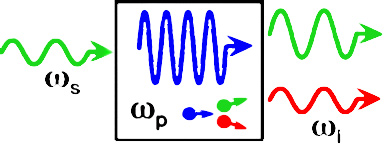|
A Quantum-Eraser Approach to Heralding High-Quality Single Photons (NSF) |
Single-photon source has become a key component in the field of quantum information processing for its wide application in quantum cryptography, quantum teleportation, quantum computing, etc. As a determining factor of the performance for all its applications, a high quality single-photon source should satisfy the following criteria: single-mode, scalable, versatile, compact and room-temperature operation. In this project, the heralding type of single-photon source is adopted, and we propose to use the so-called quantum eraser (QE) on the heralding side of a single-photon source. (Read more...) |
|
Single photon signals can be used to complete a variety of computing and communications tasks better than the best known methods which rely on traditional laser pulses. Unfortunately, the single-photon sources demonstrated to date are either very low rate or very inefficient. The goal of this project is to multiplex the outputs of four inefficient, simultaneously pumped, heralded, single-photon sources using a low-loss, all-optical, quantum switch network to generate single photons at an increased rate. This work is sponsored by the DARPA InPho program and the NASA Space Technology Research Fellowship program. (Read more...) |
|
|
The goals of this program are to establish that manifestly quantum effects occur in biology, and to exploit those quantum effects in order to demonstrate the feasibility of biomimetic quantum sensors. Because the most advanced tools for creating, manipulating, and measuring quantum states utilize photonic states and systems, this project focuses on identifying and exploiting manifestly quantum effects in photo-reactive biological systems. Few—if any—photo-reactive biological systems have had as fundamental of an impact on the field and practice of biology as fluorescent proteins. (Read more...) |
|
|
Existing protocols for quantum communications or quantum key distribution (QKD) have been based on single or few photons as information carriers. The efficiency of such protocols becomes very low when the communication distance is long. Quiness aims to devise new architectures for quantum communications with significantly increased generation rate of secure keys and extended transmission distance. In order to overcome the transmission loss, we aim to encode information in “macroscopic” quantum states containing many photons occupying a high-dimensional Hilbert space. At the same time, in order to guarantee physical security we would like to employ QKD protocols that have been developed along the same principles as those underlying the BB84 protocol or its derivatives, whose security against eavesdropping has been generally accepted. (Read more...) |
|
|
One of the primary goals of the ZOE project was to exploit the quantum Zeno effect in creating next-generation devices for (quantum) optical communication systems. The quantum Zeno effect is a phenomenon arising from the measurement postulate of quantum mechanics, which says that frequent measurements of a quantum system inhibits its unitary evolution. Here, measurement does not preclude environmental interactions with the system and is therefore not restricted to solely projective measurements. These interactions can be stimulated by either coherent or incoherent loss mechanisms, which can be understood in a general sense as reversible or irreversible coupling to the environment, respectively. (Read more...) |

